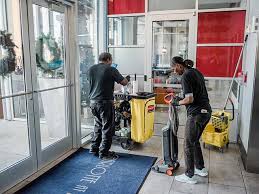Brand Planks Explained.
 My brand strategy framework presentation to prospects, contains an example of a strategy for a commercial maintenance company. An excellent company in a tough, price-driven category.
My brand strategy framework presentation to prospects, contains an example of a strategy for a commercial maintenance company. An excellent company in a tough, price-driven category.
The three brand planks supporting the brand claim are: fast, fastidious and preemptive. Taken together, these three values – top customer care-abouts and brand good-ats – are drivers of business success. If customers believe this company is faster to resolve problems, pays more attention to cleaning and maintenance detail, and offers insights about potential problems before they occur, the company can charge more money and gain market share.
Here’s the problem. If the was to do an ad saying “we are fast.” It’s a comes off as a commodity claim. If they do an ad that says they provide quality cleaning, again commodity claim. And an ad talking about preemptive, well, it’s an unexpected value and needs explanation.
Let’s deal with Fast. This commodity claim can come with baggage. Fast sometimes implies sloppy. By paring fast with fastidious, we overcome sloppy. But to really seed the idea of fast with customers, we need to prove it. Productize it. Build a response mechanism into it so everyone knows the speed of delivery. For instance, every customer calls to a service line generates a response in 15 minutes guaranteed. And for major issues, they guarantee a person on premise in 45 minutes. Guaranteed. Productized.
Words are important. Fastidious is not quality. It’s ADD quality. That’s how this company has to hire. That’s how this company has to reward employees. That’s how this company has to behave. And mostly, it does. Yes, fastidious is a word, but it’s also a product and operational strategy. And as I said, it improves the take-away on fast?
Lastly, there is Preemptive. This one’s the real kicker. Most commercial maintenance companies make money by completing tasks efficiently. To do so, they discourage employees from going beyond what they’re contractually obligated to do. My client does things differently; they keep their eyes open. If they see a potential problem or anticipate a problem, they report it. This often solves issues before they cost the client money. A copywriter might spin the phrase “We treat your business like our business.” Don’t believe it. In the commercial maintenance space customers haven’t heard the word preemptive. It’s different language. And it can be operationalized. Maybe even productized. A history list of disasters avoided on the website maybe.
Take the three planks together, not individually, and you begin to see the power of the framework. When all three actively support the brand claim you have brand strategy.
To learn the brand claim that ties this company’s strategy together write Steve at WhatsTheIdea.
Peace.







